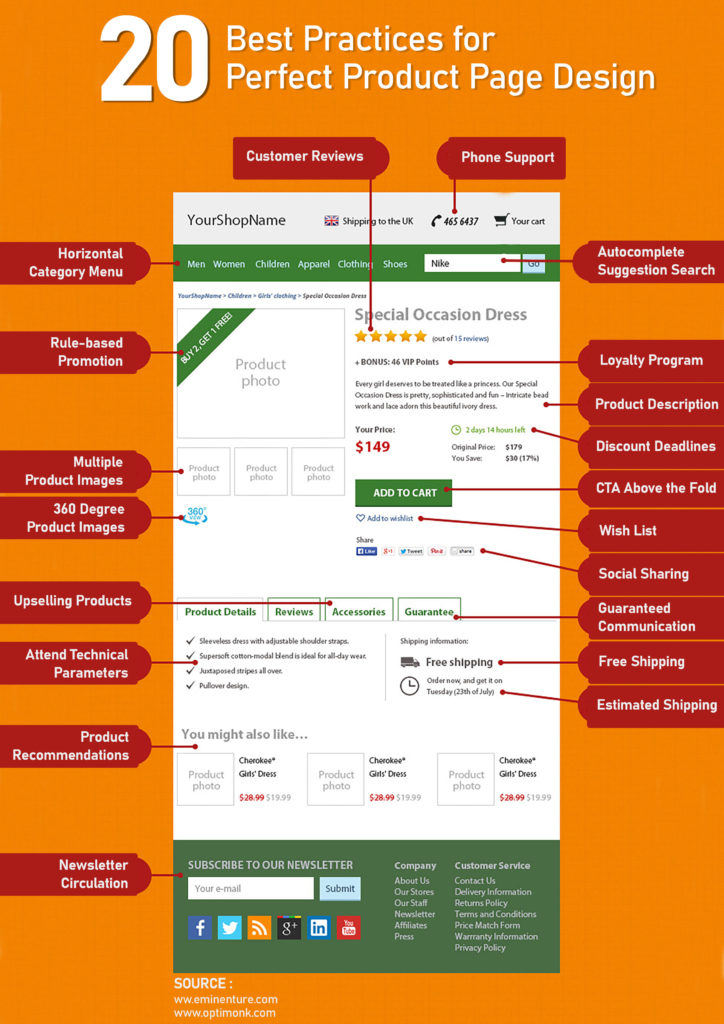Ecommerce is making sales over the internet. This is actually a challenge because you have millions of competitors there. Can you believe that there are 24 million plus e-stores available online? Beating them and defining your own visibility take a ton of effort and smart thinking.
For those who have just stepped in, do know that it can make you richer with profits. But, being right with the strategy and grabbing opportunities can help in achieving this goal. This can be easier if you know the factors that can make eCommerce a big success.

Key Success Factors in eCommerce
Let’s catch up with some significant factors that can actually make eCommerce a big success.
- Smart Price Regulation
Customers have a tendency to compare the pricing of products from different brands. Merchants are expected to be smarter than customers. They should closely watch the pricing that their competitors are offering on dailies. Fortunately, price comparison websites, such as Google Shopping, Yahoo Shopping, Pronto, Shopzilla, etc. are there to discover and compare prices.
Now that you’ve discovered the way to find pricing, focus on pricing strategies. Consider the target market and products being priced. They matter but are not sufficient. Discover some additional factors to price everything just right. It should be neither high nor low.
Take into account the discount, psychology, competition, and value while fixing it. Also, emphasize clearly displaying it. Customers are smart enough to quickly search for products and their agreed-upon or contract prices (in B2B eCommerce). Typically, it always pays out when you list down pricing. This hack can turn an interested customer into a buyer. The reason can be a discount, value, or anything. You may analyze the experience of every customer and then, offer it accordingly.
- Complete Description
Enclosing complete details of an item is a determinant factor of eCommerce success. If you have put end-to-end information, no barriers would be able to stop buyers. Simply put, the complete description makes products more accessible. Nearly 80% of buyers are more likely to purchase online if the e-store provides high-definition images, good descriptions/specifications, and videos. All the information builds confidence in customers to purchase anything. It also minimizes errors in placing orders and increases sales.
If you have a large inventory, start with 20% of it to describe effectively. Choose the items that are massive in demand. Over time, you can expand the list of salable products with good descriptions. This effort can push you to have more digital sales through different channels.
Make it crystal clear if the product is available or out of stock. Unavailing it can deliver a wrong message. If you opt in to provide true information, the end user will trust your brand. He will save and purchase in the future.
- High-Quality Products
People don’t want to compromise on the quality. Although, the majority of online customers believe that maximum e-stores offer inferior quality to physical stores. But, this is just a myth nowadays. It’s because the websites firmly provide a trial options at the time of delivery. This kind of offer has busted that myth.
You may leverage their trust by offering quality products. For this, ensure that you have procured items from trusted suppliers that are known for their supreme quality. In case you fail to do so, it will be a big blow to your online reputation. Even, no return/replacement offer could be able to heal that pain of the customer.
Overall, treat customers next to the god if you want to continue selling. Avoid bad quality products. If anyhow you see such complaints, immediately come up with corrective actions. Make sure that this improvement practice is a continuous process.
- Faster Web Accessibility
People reach out to you through your eCommerce website. It is your online store where customers virtually visit. Encourage people to engage with your website. A live chat or Augmented Reality (AR) app can make it easier. People want to see the real-time placement or size of any product. AR apps deliver a similar experience. They spend more time seeing the real-time effect, which encourages engagement. Think with Google has confirmed it, stating that 66% of customers are interested in using this technology for shopping.
Hosting these features won’t get the result unless your e-store is accessible. Here, Search Engine Optimization or SEO together with mobile responsiveness is crucial. These features help in faster loading & indexing of your website on search engines like Google. The content, tools and everything that is involved in defining an online shopping experience look optimized.
Apart from that, the website should have features for all types of customers. It should have multiple languages, currencies, and features for impaired customers. The website design should have a high-contrast visual theme and readable font.
- Secure Data
Security is, indeed, a big factor that ensures eCommerce success. Both entrepreneurs and consumers show their concern about data.
Global payment fraud has multiplied three times, scaling from $9.84 billion in 2011 to $32.39 billion in 2020. A report has indicated that this fraud is likely to cost $40.62 billion in 2027, which is 25% higher than 2020.
Online stores request to share personal details like name, email ID, address, and bank details. Scammers breach data for malicious purposes. It is especially true for credit card details, which people secure online every single day.
Here, an SSL certificate can secure customers’ online experience. It ensures that the transactional details are encrypted, which minimizes the chances of hacking. In addition, two-factor authentication can also make this security arrangement stringent. You may add verification methods to protect the account details of a user.
- Leverage Mobile Commerce
In the US retail market only, Mobile Commerce is projected to reach the benchmark of $710.42 billion sales in 2025 from 431.4 billion in 2022. It clearly shows that the mobile user base is consistently and rapidly growing year over year. To capture that market, online merchants should have mobile reach.
To not miss out on sales opportunities, the eCommerce store should be mobile-friendly. The navigation should be smoother and easy to use. Integrating easy search options, checkout, and payment features can make your day. For this purpose, you have to optimize your website site for a seamless mobile experience. Remove all glitches and make it smooth for mobile users.


